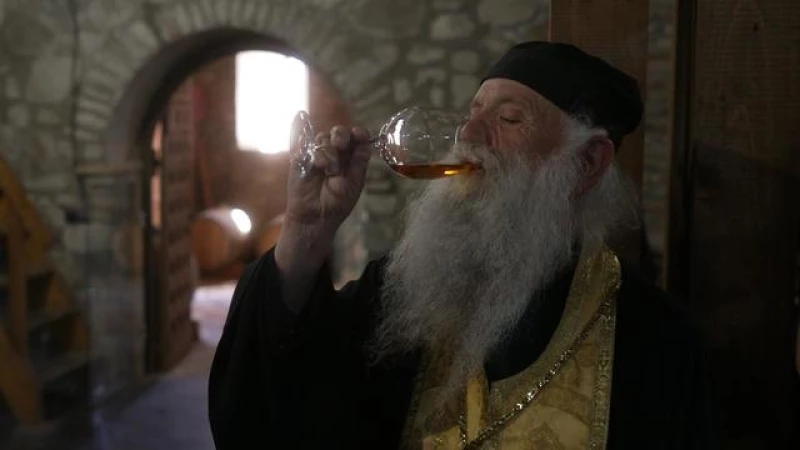Georgia: The Birthplace of Wine
If you want to start a spirited debate at your next holiday meal, ask your guests which country invented wine. France, Italy, or Greece might come to mind.
But most scholars say Georgia - the small former Soviet Republic, is the birthplace of wine. Scientists say wine residue found on pieces of pottery in Georgia dates back 8,000-years.
The country of nearly four million shares a border with Russia and has survived thousands of years of invasions and wars. Multiple dynasties have come and gone. But somehow, many Georgian grapes survived.
A Journey through Georgia
Tonight, we'll take you on a journey through Georgia to meet the promoters and protectors of Georgia's ancient vines.
When you first set foot in Georgia's capital Tbilisi... she's hard to miss.
Perched high up over the city, the towering Mother of Georgia wields a sword in her right hand to fend off her enemies and a bowl of wine in her left to welcome friends.
That welcome and the country's deep history of winemaking winds through Georgia. The vines of city dwellers cling to tiny balconies.
Small family vineyards stretch along the countryside and larger producers export millions of bottles globally.
Exploring the Rich History of Wine in Georgia
But to fully understand the rich history of wine in Georgia, we went to the fertile River Valley of Kakheti to see the Alaverdi Monastery.
At the foot of the Caucasus Mountains, the monastery looks like a fortress. We were invited inside its walls.
Our host was Georgian Orthodox Bishop David.
He oversees three monks who live on the grounds of the medieval compound. It is a quiet life, committed to god and the godly pursuit of creating a perfect glass of wine.
Sharyn Alfonsi: How many bottles of wine do you make here a year?
Bishop David (translated): 20,000 bottles with a maximum of 50,000 bottles. Our wine cellar's capacity is 30 tons of wine.
Sharyn Alfonsi: Four monks, 20,000 bottles. This is a lot of work. Do they ever sleep?
Bishop David (translated): We sleep, and work at the same time. (laughs)
Locals help work the land. But for centuries, the monks have been the guardians of these ancient vines.
The monastery dates back to the sixth century, Bishop David told us, vines were planted on day one.
Sharyn Alfonsi: Does making wine make you feel closer to God?
Bishop David (translated): Of course. Whenever we are in the vineyard or the wine cellar, we always feel that God is close to us.
Georgia's Sacred Wine Tradition
Grapes have long held a sacred place in Georgia. In ancient times, wine was considered a divine drink and offered to the gods to win favor.
Georgian soldiers tied a piece of grapevine inside the chest of their uniforms to protect them and to assure that if they died in battle, a vine would sprout from their heart.
Man was mortal, but Georgian vines – eternal.
For centuries the Georgian monks have made wine the same way. Producing reds, whites. and even, "ambers"….more on that in a moment.
The process is uniquely Georgian. Under the monastery, buried six feet deep in the ground, giant clay pots called qvervi are used to ferment, store and age the wine.
It is the traditional way to make wine in Georgia. Many homes have qveris in their cellar. But today there are only a handful of qveri makers who carry on the tradition of hand building these clay beasts. Some hold nearly 900 gallons of wine.
Pressed grapes, skins, stalks and the juice are all mixed into the qveri, which is buried in the ground to maintain a constant temperature.
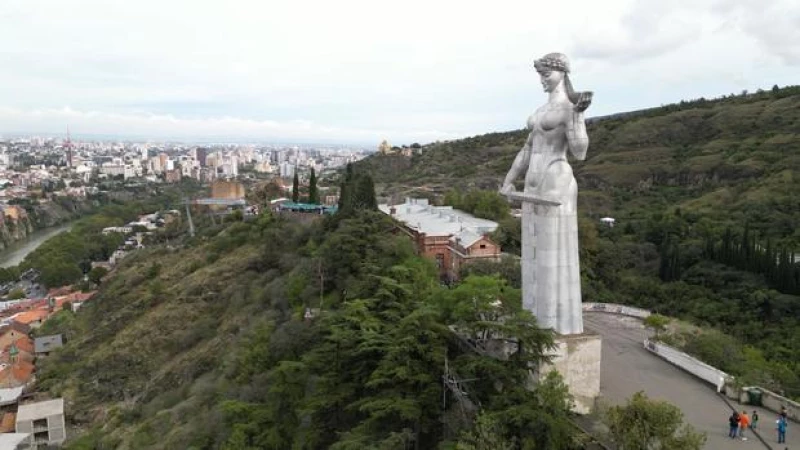
Every day during the harvest, the monks make their way through the hallowed halls of the monastery to bless the wine cellar, the grapes, and toast the bounty their vineyards bring.
Most of the monk's wine is sold. Some is shared during Sunday communion inside the Alaverdi Cathedral.
On this day, a haunting chant stirred inside the cathedral dome.
The chant, called 'you are the vineyard,' was written 900 years ago by a former king turned monk to honor Georgia's deep connection to its religion and wine.
Lit by candles, it's hard to see the scars of the cathedral. It survived earthquakes and invasions.
In an attempt to erase Georgian culture, Russians whitewashed the cathedral interiors in the 20th century, covering up 11th century frescoes, and used the monastery's qveris to store their gasoline.
But miraculously, many of the vines were unharmed.
Bishop David says today, 100 grape varieties, some dating back 900 year, are still grown on the monastery's grounds.
Sharyn Alfonsi: And how does the wine taste?
Bishop David (translated): Not to talk about taste, it's better to taste it ourselves.
Sitting near the ancient qveris, the bishop opened a bottle.
Bishop David (translated): When tasting the qveri wine for the first time, a person might think they are trying something very different.
Sharyn Alfonsi: Oh it does look golden, amber. Look at that color!
Bishop David (translated): And they say in Georgia that-- "The eye drinks and the eye eats", that's what we have to be thankful to God.
Sharyn Alfonsi: There's much to be thankful to God in this glass.
Bishop David (translated): Of course, it could not be any other way.
Heavenly, with notes of citrus, spices and honey. It is complex, like the history of Georgia, but in a glass.
Georgia's future is also tied to its wines inspiring chefs like Tekuna Gachechiladze.
Sharyn Alfonsi: How much is wine a part of the story of this country?
Chef Tekuna: This is, you know, the question: Wine or food? Or food or wine? You know? It's so together, because we don't imagine our everyday life without the wine. And the wine, it's one of the most important parts in our history, and our culture and in food also.
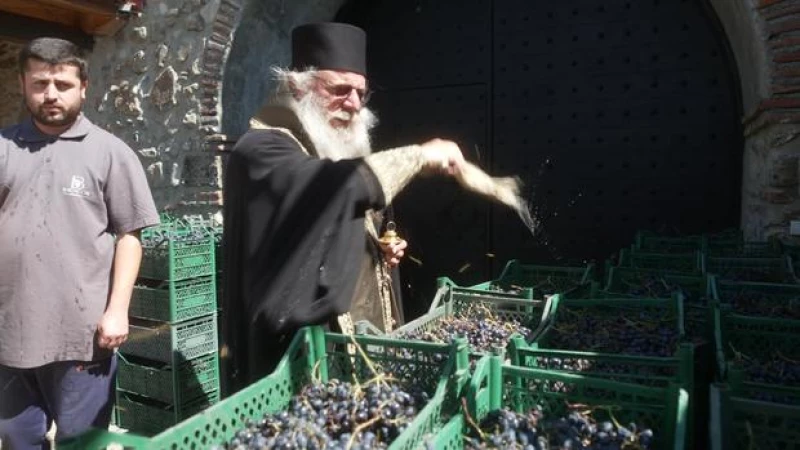
49-year-old Tekuna wasn't supposed to be a chef. While pursuing a psychology degree in New York, she was working at a restaurant and fell in love with both the chef and cooking.
She dropped the psych degree and the chef, and enrolled in culinary school in Manhattan.
A Master Chef's Influence on Georgian Cuisine
Tekuna, a renowned master chef, has been hailed as the "godmother" of Georgia's culinary evolution. She is the owner of Café Littera, a popular restaurant in the capital city of Tbilisi. The restaurant is known for its adventurous menu and wine pairings, attracting locals and tourists alike.
Revolutionizing Georgian Cuisine
During an interview with Sharyn Alfonsi, Tekuna discussed her role in revolutionizing Georgian cuisine. She explained that she began experimenting with traditional recipes and adding her own innovative twists. Initially, there was resistance from people who believed that tradition should remain untouched. However, Tekuna believes that tradition is always evolving and can be enhanced through innovation.
A Fusion of Flavors
Georgia's unique geographical location, at the crossroads of Europe and Asia, has greatly influenced its cuisine. According to Tekuna, Georgian cuisine is a fusion of various culinary influences from China, America, and Europe. The country's history of invasions and rule by different countries has brought a diverse range of tastes, spices, and cooking methods to Georgian cuisine.
A Culinary Hub
As Tekuna explains, Georgia has always been a hub for culinary fusion. Its history of being ruled by different countries has resulted in a rich and diverse food culture. The country's traditional cuisine has always embraced innovation, making it a unique and exciting dining experience.
During the interview, Tekuna presented Sharyn Alfonsi with a delicious dish, showcasing the flavors and creativity of Georgian cuisine.
Chef Tekuna: A Culinary Journey in Georgia
Chef Tekuna, a renowned chef from Georgia, showcased her exquisite culinary skills during a recent interview with Sharyn Alfonsi. The interview highlighted the unique flavors and ingredients of Georgian cuisine.
Appetizer: Pkhalis - Vegetables with Walnuts
Chef Tekuna presented the first dish, an appetizer called pkhalis. This dish combines vegetables with walnuts, a staple ingredient in Georgian cuisine. The walnuts are pulverized and used to add creaminess to various dishes, similar to how the French use butter.
Grape leaves, another favorite ingredient in Georgian cuisine, were also featured in the menu.
Tolma: A Must-Have Dish
Chef Tekuna emphasized the importance of tolma, a traditional Georgian dish, during the interview. She mentioned that no Georgian table is complete without this flavorful dish.
A Gastronomic Delight: Five Courses with Wine Pairings
The dinner prepared by Chef Tekuna consisted of five courses, each accompanied by a different glass of wine. The chef explained that the wines were sourced from different regions, each offering a unique flavor profile.
Filet Mignon and the Georgian Wine Revolution
Sharyn Alfonsi expressed her delight at the filet mignon dish prepared by Chef Tekuna. The chef also discussed the recent wine revolution in Georgia, where traditional winemaking techniques are combined with modern improvements to create exceptional wines.
A Distinctly Georgian Wine
Chef Tekuna showcased a wine that is distinctly Georgian, highlighting the rich heritage and quality of Georgian winemaking.
Experience the Difference
During the interview, Sharyn Alfonsi marveled at the color and flavors of the dishes presented by Chef Tekuna, truly capturing the essence of Georgian cuisine.

Chef Tekuna: That's why it's called Amber.
Sharyn Alfonsi: Not orange--
Chef Tekuna: Yeah. No.
Giorgi: Not orange.
Sharyn Alfonsi: Never orange.
Chef Tekuna: No.
Sharyn Alfonsi: Americans know what to do with red wine. We know what to do with white wine. But if you put an amber wine out, I would not know what I should be serving that with.
Chef Tekuna: Actually this is what's very-- interesting, amber wine, it's like a universal wine. You can drink with the vegetables. You can drink with meat. But this is what makes it unique, you know? You can pair almost with everything, you know?
Sharyn Alfonsi: It's versatile. So I noticed you said you don't like to eat when you're cooking, but you'll have a sip right?
Chef Tekuna: But I drink! (laugh)
Sharyn Alfonsi: Fine, then you can stay. (laugh)
Two hours later, the warmth of Georgian hospitality or perhaps all that wine, washed over us.
Chef Tekuna: It's like a Georgian saying that the guests are from the Gods. You have to treat the guests like you treat the Gods.
Sharyn Alfonsi: We usually hear about the guests from hell. From the Gods sounds a lot better.
Chef Tekuna: In Georgia, guests are really from the Gods. Cheers.
When most of us order wine, we look for a favorite variety, consider the region, the age or perhaps the cost. But ordering a glass of wine from Georgia can be a bit more complicated.
The former Soviet Bloc nation is the size of West Virginia but offers more than 40 varieties of wine, each with a tongue twisting name from vines centuries old.
Still, Georgian wine is gaining popularity beyond the country's borders. Last year, nearly a million and a half bottles of it were shipped to the United States – an increase of nearly 30% from the previous year.
We headed to Georgia's wine country to get a taste for ourselves.
Stretched along eastern Georgia… more than 4,000 square miles of vineyards sit at the base of its' mountains like a welcome mat.
This is the Kakheti region. Three quarters of the grapes used to make wine in Georgia are grown here.
In the middle of one of Kakheti's hundreds of vineyards we met an unlikely ambassador of Georgian wine, an American – 47-year-old John Wurderman.
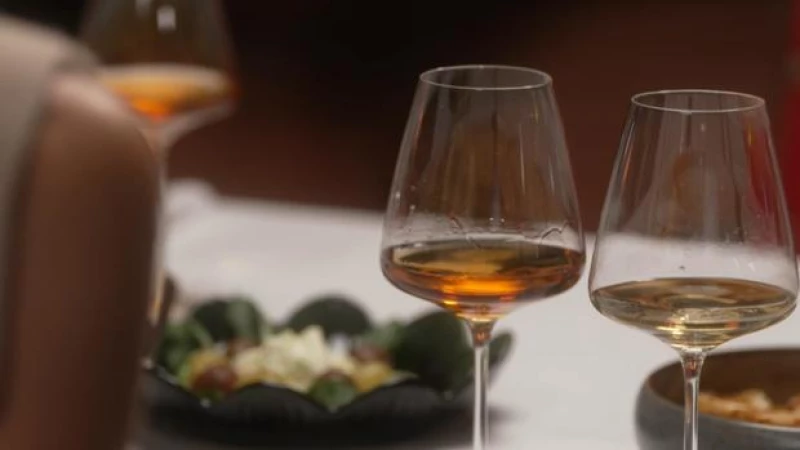
Sharyn Alfonsi: How does an American end up with all of this?
John Wurdeman, a man with a deep curiosity for a mysterious country, found himself captivated by Georgia. Despite the lack of knowledge about this place in his world, Wurdeman was drawn to it the more he learned. Growing up in Santa Fe, New Mexico, he embarked on a journey to study art in Russia. It was during this time that he discovered neighboring Georgia and fell in love with it.
Enamored by the country, Wurdeman made the bold decision to move there. In 2006, he purchased a neglected 62-acre vineyard and named it Pheasant's Tears Winery. Hiring locals to help him, Wurdeman set out on a mission to revive the ancient vines of Georgia.
Georgia, known as the birthplace of wine, boasts a mild climate and rich soil that have made it an ideal location for grape cultivation for thousands of years. Wurdeman's efforts are part of a national initiative to recultivate Georgia's ancient vines and bring them back to life.
During the Soviet era, only a handful of grape varieties were commercially available out of the 525 that existed in Georgia. Wurdeman aims to revive the forgotten varieties and restore the country's diverse wine culture.
With his passion and dedication, John Wurdeman is making a significant impact on the wine industry in Georgia and shedding light on a country that has remained a mystery to many.
Georgian Grape Varieties
Luckily, Georgians were still growing ancient grape varieties in their backyards. They were allowed to have small, private plots for their own personal use, and they kept the ancestral varieties going. So when the initiative to bring back these ancient varieties started, they turned to the individual backyards of farmers who had kept growing the varieties that their grandfathers and great-grandfathers had kept alive.
Clawing back all of the grape varieties is something Georgians take seriously - a kind of declaration of independence from their former Soviet rulers.
In 2014, the Georgian government opened two research centers to locate, study, and grow those rare grape vines.

Scientists head into the vineyards once a week to gather critical data. They analyze the DNA of grape leaves, extract juice in the field, and test it in labs for disease. Healthy vines are replanted. Today, there are more than 500 native grape varieties growing in Georgia.
At Pheasant's Tears, ancient Georgian methods are used to make the wine. Stems, skins, and juice are all mixed together, then poured into giant qveris buried deep underground and sealed with clay, where the mixture ferments and ages.
John Wurdeman: This is our lower qveri level.
Sharyn Alfonsi: Is all the wine here made in qveris?
John Wurdeman: Most all of it. There's a couple of wines that we will be tasting later that are on the fresher, lighter side from western Georgia where we use stainless steel, but everything of structure.
Sharyn Alfonsi: So based on where they are, they have a different taste?
John Wurdeman discusses the importance of the environment in winemaking: "If they're in a space that breathes versus a reductive space."
The wines are aged inside the qveris for nine months, allowing for development and understanding of the ideal time for release.
After aging, the wine is bottled and stored in a cellar.
The bottles on display are from the last 15 years, showcasing the wine's aging process.
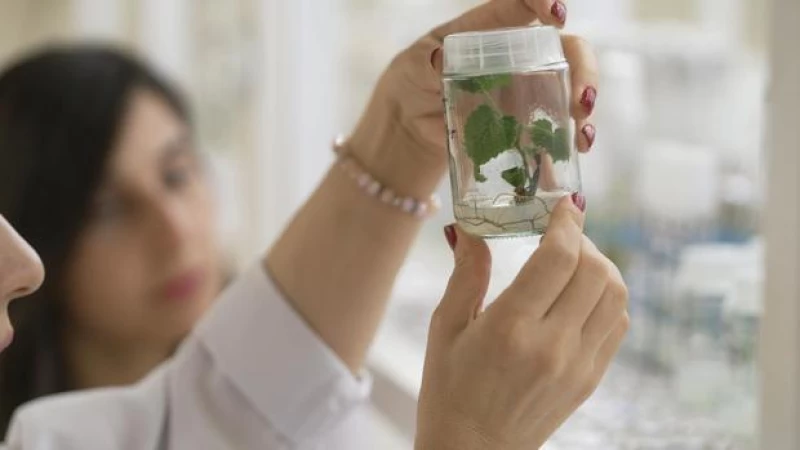
At the vineyard, we witnessed the unhurried pace of Georgia, as workers celebrated the harvest with a traditional Georgian feast called a supra.
A supra is a lavish meal typically held after special occasions such as weddings, funerals, baptisms, and births.
During the feast, guests broke into song, singing traditional Georgian folk songs that have been passed down for centuries.
Some guests even started dancing, as the lunch hour stretched into dinner.
The celebration included a series of toasts, with a half dozen of them made before dessert.
Sharyn Alfonsi marvels at the abundance of toasts, songs, and dancing, remarking, "With so many toasts, so many songs, and dancing, it's amazing anybody eats."
John Wurdeman, a Georgian wine expert, explains that the tradition of the Georgian Supra, a feast where people come together to share knowledge and learn from one another, has been passed down for generations. During these gatherings, workers who have been out in the field for hours will have a supra and make toasts about the things that are most important to them in life.
However, Wurdeman admits that introducing Georgian wines to the rest of the world has not been without its challenges. One of the main difficulties is the sheer number of Georgian wine varieties, with at least 40 being served globally. Even experienced sommeliers may struggle to pronounce them, with names like Saperavi, rkhatsiteli, and mtsvane not exactly rolling off the tongue.
Another hurdle is the unique color of Georgian wines, which Wurdeman describes as a "giant ginger elephant in the glass." Some people may be hesitant when they hear the term "orange wine," but Wurdeman assures that it is simply another way to describe the amber hue. In the early stages of promoting Georgian wines, there were concerns that the term "orange wine" might be confused with a citrus drink sold outside of Atlanta.
Overall, Wurdeman believes that Georgian wines have a lot to offer and hopes to continue educating the world about their rich history and unique characteristics.
John Wurdeman, a wine expert, explains that making orange or amber wines involves leaving the must or juice of the grapes with the skins, pips, and sometimes the stems. This process extracts both pigment and phenolic structure from the skins, changing the flavor and color of the wine. However, our preconceptions can also affect how we perceive the wine. If we were to taste the same wine in a black glass, we might describe it as a refreshing light red. But when we see it from a white grape, we may think it is clumsy or rustic. Wurdeman's friend, a Master of Wine in London, describes the orange or amber wines of Georgia as the introspective cousins of reds, not the mean sisters of whites.
In the last decade, the Georgian family of wines, including reds, whites, and ambers, have gained popularity worldwide. In the previous year, Georgia exported over 140 million bottles of wine to more than 65 countries. When asked about the growth, Wurdeman attributes it to the efforts of promoting Georgian culture and history, emphasizing that Georgia has its own language, wine culture, and culinary culture which date back to ancient times. It took some convincing, but eventually people gave Georgian wines a chance.
Over the past decade, more than 2,000 new vineyards have taken root in the country and last year, Georgian wine makers made more than $100 million.
John Wurdeman: All of a sudden, it's like watching a black and white picture of a rainbow come to color again. This diversity and expanse of color is coming back to the Georgian table after sleeping for almost-- a few centuries.
For Georgians, it's another reason to celebrate. For the rest of the world, it's a chance to taste history.
Produced by Ashley Velie. Associate producer, Jennifer Dozor. Broadcast associate, Erin DuCharme. Edited by Michael Mongulla.

